 W
WThe 2017 China floods began in early June 2017. More than 14.9017 million people in 10 provinces and municipalities and regions were affected, especially the southern and central provinces and regions of Guangxi, Guangdong, Hunan, Hubei, Jiangxi, Jiangsu, Anhui, Zhejiang, Shandong, Shaanxi, Yunnan, Sichuan, Gansu and Henan. Hunan was the hardest hit. A total of 18,100 houses were destroyed, and more than 9,821-square-metre (105,710 sq ft) of crops were inundated.
 W
WSince early June 2020, heavy rains caused by the regional rainy season led to floods severely affecting large areas of southern China including the Yangtze basin and its tributaries. Rains and floods extended to central and eastern China during July and were described as the worst since at least 1998.
 W
WThe Black Flag Army was a splinter remnant of a bandit group recruited largely from soldiers of ethnic Zhuang background, who crossed the border in 1865 from Guangxi, China into northern Vietnam, then during the Nguyen dynasty. Although brigands, they were known mainly for their fights against the invading French forces, who were then moving into Tonkin. With the sanction of both Vietnamese and Chinese authorities, the Black Flags joined the Vietnamese regular forces, stemming French encroachment beyond the Red River Delta. The Black Flag Army is so named because of the preference of its commander, Liu Yongfu, for using black command flags. The army was officially disbanded in 1885 as a result of the Treaty of Tientsin between the French and the Qing. However, remnants of the army continued to wage a guerilla war against French colonial authorities for years.
 W
WChina Southern Airlines Flight 3943 was a China Southern Airlines flight from the former Guangzhou Baiyun International Airport, Guangzhou to Guilin Qifengling Airport, Guilin, China on 24 November 1992. It crashed on descent to Guilin Airport, killing all 141 people aboard.
 W
WHuguang was a province of China during the Yuan and Ming dynasties. It was founded by the Yuan dynasty in 1274. During the Yuan dynasty it included the areas of modern Hubei south of the Yangtze river, Hunan, Guizhou, and Guangxi. During the Ming dynasty it came to include just the modern provinces of Hubei and Hunan, in the process adding areas north of the Yangtze. It was partitioned in 1644 by the newly established Qing dynasty, becoming the provinces of Hubei and Hunan, which were administered by the viceroy of Lianghu.
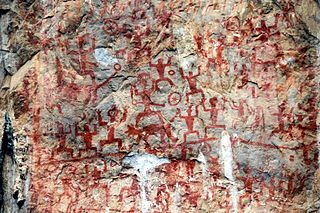 W
WThe Lạc Việt or Luoyue were an ancient conglomeration of Yue tribes that inhabited what is today Guangxi in Southern China and the lowland plains of Northern Vietnam, particularly the marshy, agriculturally rich areas of the Red River Delta. They are the owners of Bronze Age Đông Sơn culture in mainland Southeast Asia and considered to be ancestors of Vietnamese people.
 W
WThe Liujiang men are among the earliest modern humans found in East Asia. Their remains were discovered in the Tongtianyan Cave (通天岩) in Liujiang, Guangxi, China.
 W
WNanyue, also called Southern Yue or Nam Viet, was an ancient Chinese kingdom that covered the modern Chinese subdivisions of Guangdong, Guangxi, Hainan, Hong Kong, and Macau, as well as parts of southern Fujian and northern Vietnam. Nanyue was established by Zhao Tuo, then Commander of Nanhai of Qin Empire, in 204 BC after the collapse of the Qin dynasty. At first, it consisted of the commanderies Nanhai, Guilin, and Xiang.
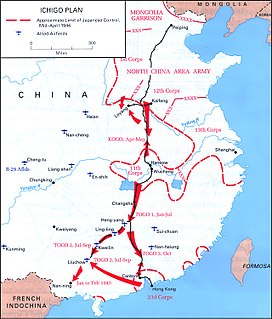 W
WOperation Ichi-Go was a campaign of a series of major battles between the Imperial Japanese Army forces and the National Revolutionary Army of the Republic of China, fought from April to December 1944. It consisted of three separate battles in the Chinese provinces of Henan, Hunan and Guangxi.
 W
WAs trade was an important source of wealth for the Yue tribes of coastal China, the region south of the Yangtze River attracted the attention of Emperor Qin Shi Huang, and he undertook a series of military campaigns to conquer it. Lured by its temperate climate, fertile fields, maritime trade routes, relative security from warring factions to the west and northwest, and access to luxury tropical products from Southeast Asia, the emperor sent armies to conquer the Yue kingdoms in 221 BC. Military expeditions against the region were dispatched between 221 and 214 BC. It would take five successive military excursions before the Qin finally defeated the Yue in 214 BC.
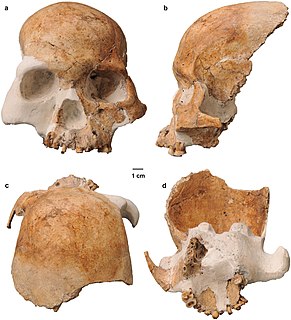 W
WThe Red Deer Cave people are a prehistoric archaic human population. Fossils dated to the Bølling-Allerød warming, between about 14,500 to c. 11,500 years ago, were found in Red Deer Cave and Longlin Cave, Yunnan Province, in Southwest China.
 W
WThe Southward expansion of the Han dynasty was a series of Chinese military campaigns and expeditions in what is now modern Southern China and Northern Vietnam. Military expansion to the south began under the previous Qin dynasty and continued during the Han era. Campaigns were dispatched to conquer the Yue tribes, leading to the annexation of Minyue by the Han in 135 BC and 111 BC, Nanyue in 111 BC, and Dian in 109 BC.
 W
WTusi, often translated as "headmen" or "chieftains", were hereditary tribal leaders recognized as imperial officials by the Yuan, Ming, and Qing dynasties of China, and the Lê and Nguyễn dynasties of Vietnam. They ruled certain ethnic minorities in southwest China and the Indochinese peninsula nominally on behalf of the central government. This arrangement is known as the Tusi System or the Native Chieftain System. It should not to be confused with the Chinese tributary system or the Jimi system.
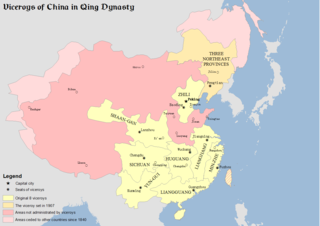 W
WThe Viceroy of Liangguang or Viceroy of the Two Guangs, fully referred to in Chinese as the Governor-General, Commander and Quartermaster, Supervisor of Waterways, and Inspector-General of the Two Expanses and Surrounding Areas, was one of eight regional Viceroys in China proper during the Ming and Qing dynasties. The two Guangs referred to Guangdong and Guangxi provinces. The areas under the Viceroy's jurisdiction included present-day Guangdong and Guangxi provinces, as well as Hainan Province.
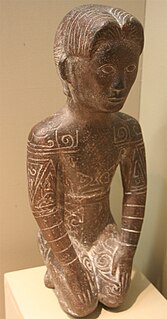 W
WThe Baiyue, Hundred Yue, or simply Yue, were various ethnic groups who inhabited the regions of Southern China to Northern Vietnam in the 1st millennium BC and 1st millennium AD. They were known for their short hair, body tattoos, fine swords, and naval prowess.